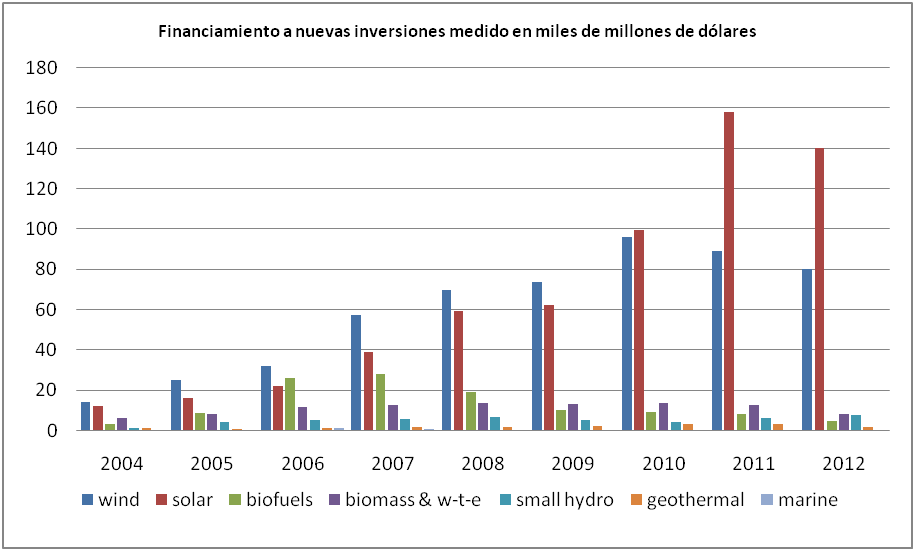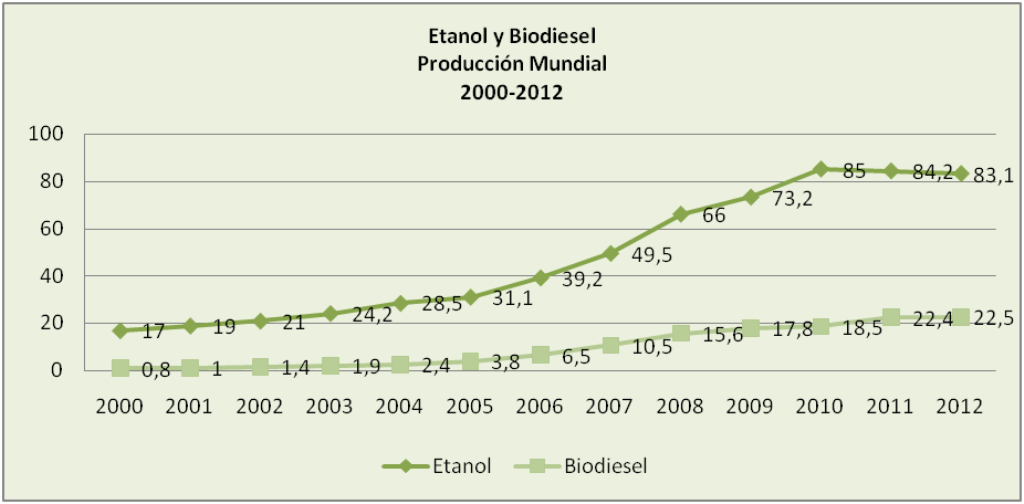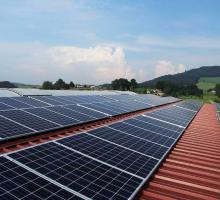
Biofuels are fuels of biological origin that come from crops grown today, as opposed to fossil fuels, which are also prehistoric biofuels that come from plants, animals and minerals that remained buried for millions of years.
Generations of Biofuels
Depending on the raw material used in their production, biofuels are divided into first-generation, second and third generation. Within the first group we find biofuels from food crops, among which are crops such as sugar cane or beet, sunflower and safflower seeds, among many others. The second generation of biofuels refers to those that can be obtained by raw materials that can become cellulose, such as waste corn, wheat, and even sawdust. Finally, the third generation biofuels is intended to get them from specific crops like algae in which case makes it especially interesting since obtaining fuel does not compete with food production; the mycodiesel that is derived form the Gliocladium Roseum fungus, that grows in the Argentinian and Chilean Patagonia, has the capability of digest directly the cellulose plant without prior processing; almost has succeded in producing biofuels through a genetic modification on the Escherichia coli bacteria, trhough this modification, the bacteria digest sugar directly and transform it in some kind of biodiesel, instead of converting it in fat which is the regular natural function.
Both second and third generation biofuels are experimental and are not yet economically profitable, although they have a promising future given the speed of development of the technology research and application in production methods.
Bioetanol, Biodiesel and Biogas
Biofuels come from various sources of the animal and plant kingdom and the products obtained as fuels are bioethanol, biodiesel and biogas. Bioethanol is a corrosive and oxygenate ethyl alcohol, high purity, obtained from renewable plant material. It is used in percentages of between 5 % (E5) 20% (E20) blended with gasoline, bioethanol function as an oxygenating and rises the power of combustion, replacing conventional component (methyl tert -butyl ether MTBE) which is highly polluting , so that gasoline blended with ethanol are less aggressive to the environment; although in Brazil, for example , it is common to use a pure way (E100 ) fuel , which requires vehicles suited for this use. Biodiesel is derived from oils, which can come from seeds, used cooking oil , or animal oils; if the oil is reused, must go through a process of cleaning and filtering, once the base oil is clean, is subjected to the main process known as transesterification in which the components are separated, resulting in biodiesel and glycerin. Meanwhile, biogas can be obtained from organic waste garbage of cities with a relatively low investment; working at sites where waste is dumped, creating landfills sealed in landfills where they decompose organic wastes generate methane gas. This gas is processed and used to generate electricity.
Overview of Global Investment in Biofuels
Currently all renewables together provide about 19% of world energy. Of these, most are represented by traditional biomass (primarily wood) and only 0.8% of total energy comes from biofuels (updated to 2013 data). As shown in the report Global Trends in Renewable Energy Investment 2013, published by the UNEP (United Nations Environment Programme UNEP), investment in biofuels had its highest peak in 2007 at 28.2 billion dollars was the figure that year was devoted to new investments in biofuels. Until 2010 the first undisputed kept investing in wind power, from 2010 onwards financing new investments mobilized towards solar energy.

Industry
Installed Capacity
The total capacity of about 650 ethanol plants operating globally is about 100 billion liters, but some operate below installed capacity and others have closed due to fluctuations in demand and other issues pertaining to product environmental sustainability.
Globally, new ethanol plants continued to open, such as the Green Future company, with a capacity of 54 billion liters/year opened in the Philippines in January 2013. As the demand for biodiesel continuous to increase, new plants are opening around the world. For example, Cargill opened its first biodiesel plant using soybean in Brazil and Lignol Energy of Canada invested $ 1.2 million to reopen a plant with 150 million liters/year capacity, in Darwin Australia.
Producing regions
America leads the whole world production of biodiesel with the U.S. first, followed by Argentina in second and Brazil third. The region is also a leading producer of ethanol, with the U.S. first, and second largest producer Brazil and Canada ranking fourth globally.
In the European region, France stands out as a producer of biodiesel as well as ethanol producer, ranking fourth and fifth respectively at the global level. Asia is rapidly increasing production of both biodiesel and ethanol. Indonesia is the fifth largest producer of biodiesel; while China is the third largest producer of ethanol.
Biofuel production in Africa is still very limited, but the markets are slowly expanding, and ethanol production reached 270 million liters in 2011 and 2012 is estimated to reach 300 million. In Zambia for example, it is expected that 200,000 liters of biodiesel produced from jatropha in 2011, triple by 2012 as a result of higher raw material availability.
Destination of biofuels
Biofuels continue to make a small but growing contribution to global demand for transport fuels, providing 3% of fuel for road transport. Also is beginning to display a small and growing use in aviation and maritime transport.
Difficulties of the industry
Growth in biofuel markets, investment and construction of new plants has slowed in many countries as a result of several factors: low margins, low commodity price, policy uncertainty, increased competition for raw materials, the impact of drought on crops, competition with food markets for land and water used.
Ethanol
The global ethanol production in 2012 was estimated at 83.1 billion liters, 1.3% less than the volume of 2011. This was partially offset by a small increase in the production of biodiesel. Not including the United States, global ethanol production increased more than 4%, but the U.S. ethanol production fell more than 4% falling to 50.4 billion liters, partly due to the high price of corn result of drought midyear. In contrast, Brazil’s production increased by 3% to 21.6 billion liters, although investment in new ethanol plants from sugar cane is very low compared to previous years. Overall, the U.S. accounts for 61 % (63 % in 2011) and Brazil 26% ( 25 % in 2011 ) of total world production of ethanol.
While well below the two leaders countries in ethanol production, we also find China, Canada and France. In Sweden ethanol demand continued to increase , where about 200,000 flex-fuel vehicles are using high blends of ethanol (up to E85) locally produced and imported .
Biodiesel
Global biodiesel production continued to increase, but at a much slower pace than several years ago. In 2012 reached a level of 22.5 billion liters compared with 22.4 billion liters in 2011. United States located as the largest producer, followed by Argentina, Germany, Brazil and France. The U.S. biodiesel plants produced 3.6 billion liters in 2012, slightly above the 2011 level, but closer to the goal set by the Environmental Protection Agency; this goal requires that 4.8 billion gallons of biodiesel be included in the diesel fuel market to 2013.
Europe accounts for 41 % of the production of biodiesel in the world, led by Germany, which produced about 2.7 billion liters in 2012 (down 14% compared to 2011). In most countries in the European region production fell 7 %, including Spain (-32%), Portugal (-14%) and Italy (-44%) - but increased in France (18%), Poland (63%) and the UK (53%). The total Brazilian production of biodiesel from soybean oil (77-82%), beef tallow (13-17%) and cotton seed oil (2%) increased slightly to 2.7 billion liters. Argentina beat Germany in the sector ranking and reached the second place as a global producer of biodiesel, with production of 2.8 billion liters. In Mexico were certified by the Roundtable on Sustainable Biofuels, the Jatropha tree plantations, and a small biodiesel plant was installed in Cuba to produce biodiesel from Jatropha oil .
Biodiesel production in China remained unchanged around 2.1 billion liters of ethanol and 0.2 billion biodiesel. Thailand increased production of both ethanol and biodiesel, reaching a production of 1.6 billion liters, 40% higher than in 2011. India surpassed Italy in the biofuel production in 2012, increasing its ethanol production 25% , reaching 0.5 billion liters .

Prices
The average world price of ethanol in 2012 was around 85 cents per liter; showing a steady increase since 2006 when he was in USD 0.41/litre. The global average price of biodiesel by 2012 was around USD 1.5/litre.
Sources
- Global renewable energy investment trends in 2014; Frankfut School-UNEP Collaborating Centre.
- Renewable 2013 Global Status Report.
- Graphics: Authors’ calculations based on data from Renewable 2013 Global Status Report



